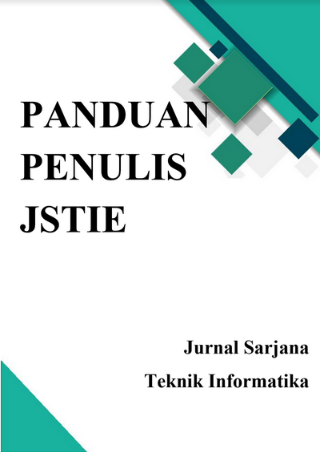PEMBUATAN MODEL ENTERPRISE ARCHITECTURE PLANNING BTM SURYA UMBULHARJO DENGAN TOGAF ARCHITECTURE DEVELOPMENT METHOD (BAGIAN PENGHIMPUNAN DAN PEMBIAYAAN)
DOI:
https://doi.org/10.12928/jstie.v2i2.2858Abstract
BTM Surya Umbulharjo merupakan badan usaha atau amal usaha yang bergerak di bidang pelayanan jasa keuangan mikro syariah yang kegiatannya untuk menghimpun dana dan menyalurkannya melalui usaha jasa keuangan syariah dari dan untuk anggota. Perencanaan strategi sistem informasi, sumber daya manusia, integrasi data, aplikasi pendukung proses bisnis dan perangkat infrastruktur teknologi belum dapat memenuhi kebutuhan proses bisnis penghimpunan dan pembiayaan yang sesuai dengan perkembangan bisnis organisasi dalam pengembangan arsitektur enterprise. Salah satu tujuan dari penerapan arsitektur enterprise adalah menciptakan keselarasan antara bisnis dan teknologi informasi bagi kebutuhan organisasi.
Metodologi yang digunakan dalam pembuatan model arsitektur enterprise adalah TOGAF ADM (Architecture Development Method). Penelitian dilakukan dengan observasi, wawancara dan dokumentasi yang terkait dengan kondisi proses bisnis, sistem informasi dan infrastruktur saat ini. Tahapan pemodelan dimulai dari pembuatan arsitektur visi, arsitektur bisnis, arsitektur sistem informasi yang meliputi data dan aplikasi, arsitektur teknologi, peluang dan solusi, perencanaan migrasi. Tahap selanjutnya melakukan pengujian terhadap model yang dihasilkan dan memberikan rekomendasi.
Dari penelitian yang dilakukan menghasilkan sebuah model yang berisi dokumen perancangan Enterprise Architecture Planning (EAP) yang meliputi bisnis, data, aplikasi dan teknologi. Dari hasil uji kelayakan bahwa pemodelan arsitektur enterprise yang dibuat layak diterapkan di BTM Surya Umbulharjo serta valid dengan hasil pengujian diperoleh 100%.
Â
Kata kunci : Arsitektur enterprise, BTM Surya Umbulharjo, Koperasi, TOGAF ADM.References
Harrison, K., Varveris, L. (2006). TOGAF: Establishing Itself As The Devennitive Method For Building Enterprise Architecture in The Commercial World.
Hartono, Jogiyanto. 2005. Sistem Informasi Strategik untuk Keunggulan Kompetitif (Edisi II). Yogyakarta: Andi.
IBM, 1981, Business System Planning: Information Systems Planning Guide, International Bussiness Machines Corporation.
Mufiatun Ina. 2012. “Pembuatan Model Sistem Informasi E-Government Menggunakan Kerangka Kerja TOGAF ADM Berbasis SOA (Service Oriented Architecture) Di Dinas Kelautan dan Perikanan Provinsi DIYâ€. Skripsi S1. Jurusan Teknik Informatika, FTI, UAD.
Mutyarini, Kuswardani dan Sembiring, Jaka. 2006, “Arsitekture System Informasi Institusi Perguruan Tinggi Di Indonesiaâ€, Prosiding Konferensi National Teknologi Informasi dan Komunikasi untuk Indonesia, 1-6
Reni, Nurtika, Reni. 2012. “Pembuatan Enterprise Architecture Planning di Lembaga Penanggulangan Bencana PP Muhammadiyah Yogyakarta dengan Menggunakan Kerangka Kerja Zachmanâ€. Skripsi S1. Jurusan Teknik Informatika, FTI, UAD.
Rosmala, Dewi, dan Falahah. 2007, “Pemodelan Proses Bisnis B2B dengan BPMN (Studi Kasus Pengadaan Barang pada Divisi Logistik)â€, SNATI 2007
Surendro, Kridanto. (2007), Pemanfaatan Enterprise Arsitekture Planning Untuk Perencanaan Strategis Sistem Informasi mendukung Sistem Informasi, Tesis Magister, Institut Teknologi Bandung.
Surendro, Kridanto. 2009. Pengembangan Rencana Induk Sistem Infromasi. Bandung: Informatika.
Yunis, R., Surendro, K. (2008). Pemilihan Metodologi Pengembangan Enterprise Architecture untuk Indonesia. Prosiding SNIKA. Vol. 3, No.1:pp A53-A59.
Open Group. (2009). The Open Group Architecture Framework:Architecture Development Method. Diakses pada tanggal 29 November 2013 Pukul 21.30 WIB dari (http://pubs.opengroup.org/architecture/togaf9-doc/arch/)
Downloads
Published
Issue
Section
License
License and Copyright Agreement
In submitting the manuscript to the journal, the authors certify that:
- They are authorized by their co-authors to enter into these arrangements.
- The work described has not been formally published before, except in the form of an abstract or as part of a published lecture, review, thesis, or overlay journal. Please also carefully read Journal Posting Your Article Policy.
- The work is not under consideration for publication elsewhere.
- The work has been approved by all the author(s) and by the responsible authorities – tacitly or explicitly – of the institutes where the work has been carried out.
- They secure the right to reproduce any material that has already been published or copyrighted elsewhere.
- They agree to the following license and copyright agreement.
Copyright
Authors who publish with Jurnal Sarjana Teknik Informatika agree to the following terms:
- Authors retain copyright and grant the journal right of first publication with the work simultaneously licensed under a Creative Commons Attribution License (CC BY-SA 4.0) that allows others to share the work with an acknowledgement of the work's authorship and initial publication in this journal.
- Authors are able to enter into separate, additional contractual arrangements for the non-exclusive distribution of the journal's published version of the work (e.g., post it to an institutional repository or publish it in a book), with an acknowledgement of its initial publication in this journal.
- Authors are permitted and encouraged to post their work online (e.g., in institutional repositories or on their website) prior to and during the submission process, as it can lead to productive exchanges, as well as earlier and greater citation of published work.







